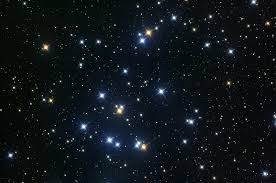
We are aware that the stars of the constellations act as a pavement for several celestial bodies that were discovered in the sky. The constellations of the Zodiac continue to stand as a tool for the astronomers and stargazers. However, Cancer is the dimmest of all the constellations of the Zodiac. In Latin, Cancer means ‘crab’ and has only two stars above the fourth magnitude. It is more like a faint upside down Y and hence, it becomes impossible to see it with the naked eye. It can be clearly visible in the month of March at 9 pm. It belongs to the Zodiac family of constellations and like many other constellations of the Zodiac, this constellation was documented by Ptolemy, a Greek astronomer in the 2nd century. Let us learn more about this constellation.
Some of the major stars in the constellation of Cancer are:
- Acubens or Alpha Cancri: It is the fourth brightest star in Cancer. This star is also known as Al Zubanah which means ‘claws’ or Sertan which means ‘the crab’. It is a multiple star system and its apparent magnitude varies between 4.20–4.27 and is located approximately 174 light years away from the earth.
- Al Tarf or Beta Cancri: The brightest star in the constellation, it is an orange K–type binary star. Its traditional name Al Tarf is believed to come from an Arabic word which means ‘the eye’. Its magnitude is about 3.5 and is approximately 290 light years distant.
- Asellus Australis or Delta Cancri: It is an orange giant and the second brightest star in Cancer. This star also has the longest name, Arkushanangarushashutu in ancient Babylonian meaning “the southeast star in the crab.” With an apparent magnitude of about 3.94, it is about 180 light years distant from the earth.
- Asellus Borealis: It traditionally means ‘northern donkey colt’. This star is also called as Gamma Cancri. It is a white A–type subgiant, approximately 158 light years distant and has a magnitude of about 4.66. It is also located near the ecliptic like the Alpha and Delta Cancri.
- 55 Cancri: This is a double star consisting of a yellow main sequence dwarf. It is visible only through a telescope and is approximately 41 light years away from the earth.
- Tegmine: It means ‘the shell of the crab’. It is a multiple star system, also known as Zeta Cancri. The star contains at least four stars and is composed of two binary stars namely Zeta–1 Cancri and Zeta–2 Cancri, which is separated by 5.06 seconds. It has an apparent magnitude of about 4.67 and is approximately 83.4 light years away from the earth.
- Lambda Cancri: This is a blue–white B–type star. It is about 419 light years distant from the earth and has an apparent magnitude of 5.92.
- Xi Cancri: It is also known as Nahn and is a spectroscopic binary star, approximately 381 light years distant from the earth.
Cancer is said to have several deep sky objects, a few of them include:
- Praesepe or the Beehive Cluster: Located at the centre of this constellation, it is also known as NGC 2632, M44, Messier 44 or Cr 189. The Beehive cluster is called Praesepe as it means ‘the manger’ in Latin. One of the nearest and most populated open clusters to the solar system, it is estimated to be around 600 million years old. The star is about 577 light years away from the earth and its magnitude is 3.7.
- Messier 67: This is one of the the oldest open clusters known in astronomy. It was discovered by the German astronomer Johann Gottfried Koelher in the year 1779 and has a magnitude of about 6.1.
- NGC 2775: It is also known as Caldwell 48, a spiral galaxy with multiple spiral arms meaning that there has been a star forming activity in it in the recent years. It was discovered by William Herschel in 1783 and is approximately 55.5 million light years away from the earth. Its magnitude is about 11.03.
- NGC 2535: NGC 2535, an unbarred spiral galaxy and NGC 2536, a barred spiral galaxy are the two interacting galaxies in Cancer. The former has an apparent magnitude of about 16.9 while the latter has a magnitude of about 14.6.
- NGC 2500: This is another barred spiral galaxy and is about 33 million light years distant from the earth. It has a magnitude of about 12.2 and was discovered in the late 18th century.
NGC 2608: It is a different barred spiral galaxy. With an apparent magnitude of about 13.01, it is approximately 62,000 light years across.
Cancer lies in the second quadrant of the northern hemisphere between latitudes +90° and -60°.

It occupies an area of 506 square degrees in the sky, making it the 31st largest constellation in the sky. The primary K–type star of this constellation is 290 light years distant from the earth.
Like many other constellations, Cancer too has many mythological stories associated with it. According to one of them, the crab signifies the Twelve Labours of Hercules. Once, while Hercules was fighting a serpent–like beast named Lemaean Hydra, Hera the queen of gods sent a crab to distract him. When the crab tried to bite Hercules, he kicked it all the way to the stars. Another version of the same story speaks of Hera being replaced in the sky for her efforts to kill Hercules while the crab gets crushed. She was placed in a region with no brighter stars as the crab failed in its task, in spite of Hera’s efforts. There is one more story associated with one of the stars of Cancer constellation; it is the nebulous object. The Greeks and Romans associated it with the donkeys that God Dionysus and his tutor Silenus rode in the war against the Titans. For the ancient Chinese, this nebulae object was a ghost or a demon riding a carriage while calling it a ‘cloud of pollen blown from under willow catkins’.

Its neighbouring constellations are Canis Minor, Gemini, Hydra, Leo, Leo Minor and Lynx.
G Kowledge of | 0 Comments >>
0 Comments
Leave Comment
Your email address will not be published. Required fields are marked.